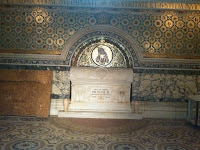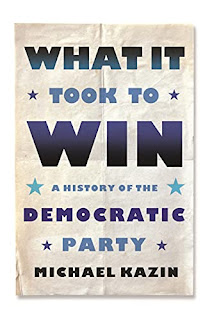The Hollywood Writers’ Strike may be ending, but it is neither the only nor the most important labor strike this season. Indeed, I am currently feeling a certain sort of nostalgia for an earlier, politically more coherent time when « working class » Americans understood their own interests at least sufficiently to be union members and to strike periodically. Most vividly, I can remember the 1957 steel strike, but there were lost of strikes, big and small, back when organized labor still had real clout and real relevance. Then came a string of anti-labor presidents, starting with Jimmy Carter, and the political transformation known as Neo-liberalism.
By background and inclination, however, President Joe Biden is different from his recent predecessors. He has consistently come across as pro-labor and, therefore, pro-union. And so today he will become the first American president to join a picket line in the current UAW Strike. Politics is about taking sides. Justice is also about taking sides. So more power to president Biden for taking sides in this perennial conflict between the workers who produce our nation’s wealth and the CEOs and shareholders who pocket most of it.
In so doing, Biden, our second Catholic President, is also reflecting some of the best traditions in the American Church. As George Cardinal Mundelein (1872-1939) famously said at the Chicago Holy Name Convention in 1938: « Our place is beside the poor, behind the working man. » In 1935, the U.S. Bishops abandoned their general policy of not supporting specific legislation in order to endorse the Wagner Act, which officially supported labor’s right to organize and which established the National Labor Relations Board.
In The Rise and Fall of the Neoliberal Order, Gary Gerstle recalled how at the beginning of the 20th century Progressive Republican Theodore Roosevelt and Democrat Woodrow Wilson both « rejected the notion that the free market constituted a natural order whose energies were beyond the capacity of humans to manage or redirect. They believed that unregulated markets had produced an intolerable imbalance in power and wealth between employers and employees. »
That view would increasingly rise to political dominance in FDR’s New Deal and in the corresponding alliance between the Democratic Party and organized Labor. As Michael Kazin, in What It Took to Win: A History of the Democratic Party, has observed, the New Deal Democrats became « the closest thing the United States would ever have to a party dependent on the support of organized labor. »
That alliance famously began to break down in the 1970s, as the Democrats began their contemporary evolution to a party dominated by a higher status, college educated, non-working class component. In 1972, the AFL-CIO Executive Council voted to remain neutral in the presidential race between Democrat George McGovern and Republican President Richard Nixon. That was the first time since the 1920s that that body representing most union members had failed to endorse the Democratic nominee, and it reflected the increasing alienation between the Democratic Party and its formerly working-class constituency. One dire consequence of this parting of the ways has been that, during subsequent decades of economic growth, the benefits have disproportionately gone to the rich, and that the Democrats have seemed to offer relatively little to those working class families whose incomes have hardly increased at all.
Meanwhile, the Republican Party, which paradoxically has increasingly attracted more and more working class voters, had long ago consolidated an intensely anti-labor, anti-union political and policy stance. This became increasingly the basis of national policy especially after the ascent of Ronald Reagan, who emphasized an ideology of personal, individual freedom and antagonism to what the New Deal had accomplished.
In 1981, Reagan famously fired more than 10,000 air traffic controllers who had gone on strike for better pay and improved working conditions. Reagan’s action signaled a more hostile stance toward unions than any administration had in decades. Symbolically, Gerstle suggests, Reagan’s action « carried as much significance as the refusal of the Democratic governor of Michigan and President Franklin Roosevelt in 1937 to send National Guard or federal troops to Flint to oust the autoworkers occupying the plants of General Motors. This 1930s refusal signaled that a president and his party were serious about compelling corporations to reach fair agreements with unions that had organized their workers. Similarly, Reagan’s firing of an entire workforce for going on strike was the equivalent of a president sending in the troops to break a strike. It served notice that the president and the dominant party were now ready to eviscerate labor’s power. » Indeed, the American labor movement has hemorrhaged members since the 1980s. As Gerstle notes, « there is no more powerful form of market deregulation than stripping government of its ability to strengthen workers in their negotiations with employers. »
It is hardly accidental that, among the current crop of anti-Trump Republican primary candidates, Reagan’s 1981 action has been recalled and invoked as an example to be followed (despite the obvious difference between public-sector and private sector workers).
For his part, « Populist » candidate Trump is trying to position himself as the candidate for the working class, despite the record of his presidency and the predilections of his party. Presumably, Biden’s trip today to Michigan is intended in part to rebut Trump’s curious claim.
As perhaps befits a president of his age (and the wisdom and experience that accompany old age), Joe Biden is a throwback to that older alliance between the Democratic Party and organized labor – in a way that recent Democratic presidents never were or really even appeared to want to be.
What impact Biden’s gesture may have in the forthcoming election, in the absurdist theater that American politics has become, is anyone’s guess. But three cheers for the President for taking sides in this perennial conflict between democracy and plutocracy!
Photo: Then-candidate Joe Biden delivers remarks outside the UAW Region 1 offices on Sept. 9, 2020, in Warren, Michigan: Chip Somodevilla/Getty Images





